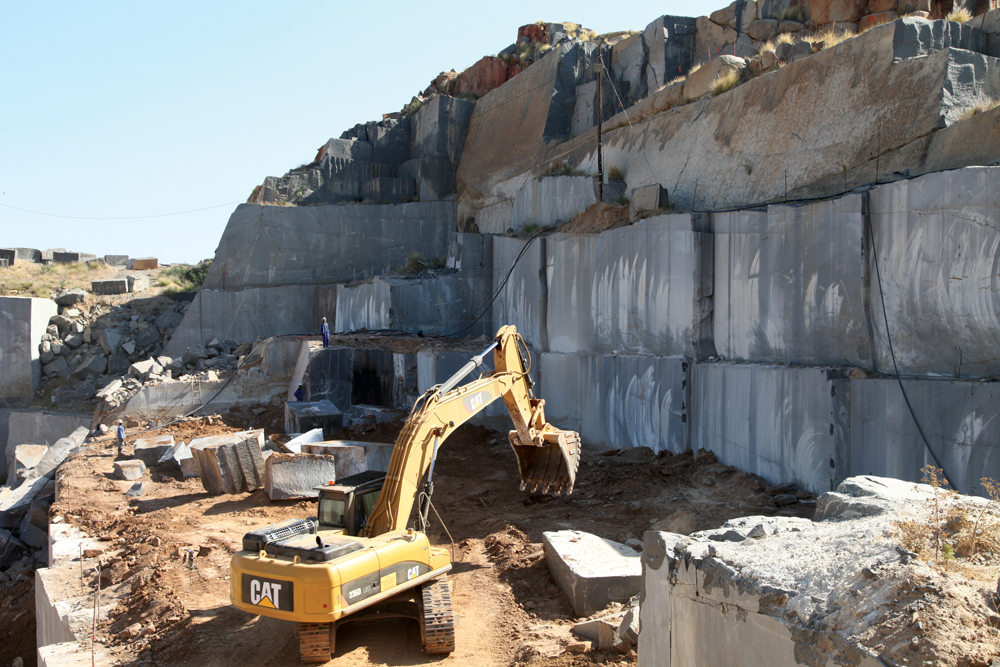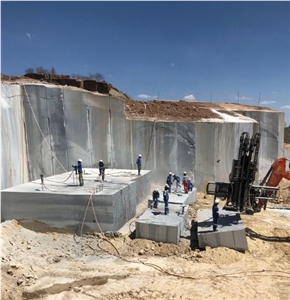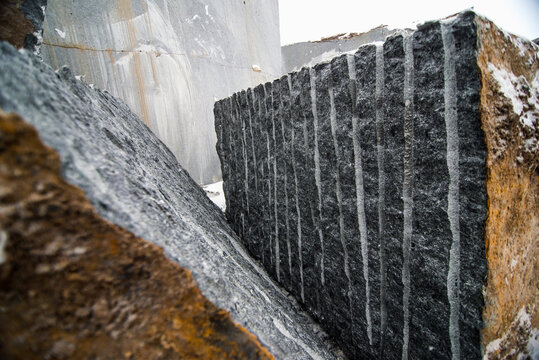The Covert Gems: Discovering Granite Quarries in South Africa
The Covert Gems: Discovering Granite Quarries in South Africa
Blog Article
Letting Loose the Appeal and Resilience of Granite Quarry: A Trip With Time
Granite quarries stand as testaments to both the geological wonders of our earth and the long-lasting workmanship of humanity. The journey with time that granite quarrying represents is an engaging narrative of advancement, perseverance, and the intricate dance between nature and market. Comprehending the origins of this age-old method, the advancement of techniques and tools employed, and the modern significance of granite quarrying unveils a tapestry abundant in history and relevance. As we peel back the layers of time and dive into the intricate world of granite quarrying, we reveal a tale that not only showcases the elegance and sturdiness of this stunning rock yet also loses light on the profound influence it has carried civilizations past and present.

The Beginnings of Granite Quarrying
In the record of background, the origins of granite quarrying can be mapped back to ancient civilizations where the quest for durable structure materials fueled the introduction of this ageless craft. From the majestic frameworks of old Egypt to the magnificent holy places of Greece, granite has actually been prized for its strength, elegance, and long life. The Egyptians, with their innovative quarrying strategies, were amongst the initial to draw out granite widespread, using it to build monumental pyramids and intricate statuaries that have stood up to the test of time.
As human beings evolved, so did the methods of quarrying granite. The Romans even more refined the techniques, developing tools and machinery to essence and transportation granite over huge distances for their architectural projects. The longevity and visual appeal of granite made it a treasured product for sanctuaries, monuments, and sculptures throughout the ages.
Today, the legacy of ancient quarrying practices survives on, with modern-day innovation boosting efficiency while still paying homage to the craftsmanship of our ancestors. The beginnings of granite quarrying offer as a testament to human ingenuity and the enduring allure of this worthy stone.
Devices and Strategies of Quarrying
Quarrying granite requires specialized equipment to remove the stone from the earth successfully and with accuracy. Modern quarries make use of diamond-wire saws, high-powered drills, and dynamites to damage apart the granite in a controlled way.
In addition to advanced machinery, traditional hand tools are still utilized in particular quarrying procedures to guarantee delicate precision in removing the rock. Chisels, hammers, and wedges are used by skilled quarry employees to separate granite obstructs along all-natural fractures, a strategy that has actually been passed down via generations.
Moreover, methods such as piercing vertical and horizontal holes for putting feathers and wedges, as well as the regulated usage of nitroglycerins in calculated locations, allow quarry workers to extract granite efficiently while protecting the honesty of the rock. The consistency between modern-day innovation and typical craftsmanship is key to the lasting quarrying of granite for generations to find.
Evolution of Granite Quarries
The transformation of granite quarries with time reveals an interesting story of technical development and industry evolution. From ancient times where manual devices like knives and hammers were used to draw out granite blocks, to the commercial revolution introducing steam-powered machinery for faster quarrying, the evolution of granite quarries has actually been noted by substantial advancements. In recent decades, the development of diamond wire saws and advanced exploration innovations has reinvented the extraction process, allowing for more exact cuts and minimized waste of raw material.

Granite Quarrying in Modern Times
The progression of granite quarrying strategies from historical reliance on manual devices to the innovative methods of modern-day times emphasizes an amazing trip of technological technology and sustainability practices within the sector. In modern granite quarrying, progressed machinery such as diamond cable saws, high-capacity excavators, and electronic boring equipment have transformed the extraction process. These tools boost efficiency, accuracy, and safety, allowing for bigger quantities of granite to be drawn out in a shorter timeframe contrasted to typical techniques.
Furthermore, modern quarrying methods focus on sustainability and ecological stewardship - granite quarries in south africa. Companies are progressively embracing green methods like water recycling systems, dust suppression innovations, and rehab prepare for exhausted quarries. These campaigns intend to reduce the environmental influence of granite extraction, preserve natural deposits, and recover quarried landscapes to their initial state
Moreover, the assimilation of electronic technologies like drones, GPS monitoring, and 3D modeling has made it possible for quarry operators to maximize operations, enhance decision-making, and make sure the sustainable monitoring of sources. By welcoming development and sustainability, the granite quarrying industry in modern-day times continues to thrive while supporting environmental obligation.

Preserving and Safeguarding Granite Quarries
Among the developing landscape of granite quarrying methods, preservation and protection of these important all-natural websites have come to be critical worries for sector stakeholders and environmental advocates alike. As granite quarries proceed to be a vital source of this coveted rock, it is vital to adopt sustainable approaches that ensure their durability and safeguard surrounding ecological communities.
Preserving granite quarries includes implementing efficient recovery strategies to restore the land post-extraction. granite quarries in south africa. This process includes improving the surface, replanting indigenous greenery, and developing here are the findings environments for wildlife to grow. By recovering quarries to their natural state, the ecological influence can be decreased, and the beauty of these landscapes can sustain for future generations to value
In addition, shielding granite quarries needs imposing guidelines that control liable quarrying methods. This consists of surveillance water quality, regulating dust exhausts, and handling sound levels to minimize disturbances to the atmosphere and nearby areas. Collective initiatives between market players, governmental bodies, and preservation groups are critical in supporting these requirements and making certain the lasting use granite quarries.
Final Thought
To conclude, the trip with time in granite quarrying discloses the beginnings, tools, methods, and advancement of this practice. The modern-day era has brought advancements in quarrying techniques, enabling the conservation and protection of these valuable all-natural sources. It is necessary to proceed to promote sustainable techniques to make sure the appeal and sturdiness of granite quarries for future generations to appreciate.
Report this page